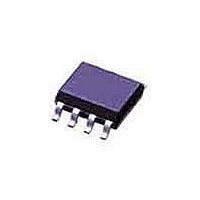SST25VF080B-80-4I-SAE Microchip Technology, SST25VF080B-80-4I-SAE Datasheet - Page 20

SST25VF080B-80-4I-SAE
Manufacturer Part Number
SST25VF080B-80-4I-SAE
Description
2.7V To 3.6V 8Mbit SPI Serial Flash 8 SOIC 3.90mm (.150") TUBE
Manufacturer
Microchip Technology
Datasheet
1.SST25VF080B-80-4C-S2AE.pdf
(36 pages)
Specifications of SST25VF080B-80-4I-SAE
Format - Memory
FLASH
Memory Type
FLASH
Memory Size
8M (1M x 8)
Speed
80MHz
Interface
SPI Serial
Voltage - Supply
2.7 V ~ 3.6 V
Operating Temperature
-40°C ~ 85°C
Package / Case
8-SOIC (0.154", 3.90mm Width)
Architecture
Flexible, Uniform Erase
Timing Type
Synchronous
Interface Type
SPI
Supply Voltage (max)
3.6 V
Supply Voltage (min)
2.7 V
Maximum Operating Current
30 mA
Mounting Style
SMD/SMT
Lead Free Status / RoHS Status
Lead free / RoHS Compliant
Lead Free Status / RoHS Status
Lead free / RoHS Compliant
A Microchip Technology Company
©2011 Silicon Storage Technology, Inc.
Enable-Write-Status-Register (EWSR)
Write-Status-Register (WRSR)
The Enable-Write-Status-Register (EWSR) instruction arms the Write-Status-Register (WRSR)
instruction and opens the status register for alteration. The Write-Status-Register instruction must be
executed immediately after the execution of the Enable-Write-Status-Register instruction. This two-
step instruction sequence of the EWSR instruction followed by the WRSR instruction works like SDP
(software data protection) command structure which prevents any accidental alteration of the status
register values. CE# must be driven low before the EWSR instruction is entered and must be driven
high before the EWSR instruction is executed.
The Write-Status-Register instruction writes new values to the BP3, BP2, BP1, BP0, and BPL bits of
the status register. CE# must be driven low before the command sequence of the WRSR instruction is
entered and driven high before the WRSR instruction is executed. See Figure 19 for EWSR or WREN
and WRSR instruction sequences.
Executing the Write-Status-Register instruction will be ignored when WP# is low and BPL bit is set to
“1”. When the WP# is low, the BPL bit can only be set from “0” to “1” to lock-down the status register,
but cannot be reset from “1” to “0”. When WP# is high, the lock-down function of the BPL bit is disabled
and the BPL, BP0, and BP1 and BP2 bits in the status register can all be changed. As long as BPL bit
is set to 0 or WP# pin is driven high (V
the WRSR instruction, the bits in the status register can all be altered by the WRSR instruction. In this
case, a single WRSR instruction can set the BPL bit to “1” to lock down the status register as well as
altering the BP0, BP1, and BP2 bits at the same time. See Table 2 for a summary description of WP#
and BPL functions.
Figure 19:Enable-Write-Status-Register (EWSR) or Write-Enable (WREN) and
SCK
CE#
SO
SI
MODE 3
MODE 0
Write-Status-Register (WRSR) Sequence
0 1 2 3 4 5 6 7
MSB
50 or 06
IH
20
) prior to the low-to-high transition of the CE# pin at the end of
HIGH IMPEDANCE
MODE 3
MODE 0
MSB
0 1 2 3 4 5 6 7 8 9 10 11 12 13 14 15
8 Mbit SPI Serial Flash
01
MSB
7 6 5 4 3 2 1 0
REGISTER IN
STATUS
SST25VF080B
S71296-05-000
1296 EWSR.0
Data Sheet
02/11














